#ronald kolodzie
Text

US Vogue August 1973
Beska Sörenson in a soft jersey dress that slips on the body
in burgundy, the top like an oversized shirt. Prettier worn open at the neck. Burgundy tights by Burlington. High heel suede pumps, by Delman Salon. Dress; Concept VII by Jack Bodi and Ronald Kolodzie, in Qiana nylon (Initial Trends fabric).
Earrings, Trifari, handbag, Morris Moskowitz. Maury Hopson hairstyle.
Beska Sörenson dans une robe en jersey doux qui glisse sur le corps
en bordeaux, le haut comme une chemise oversize. Plus joli porté ouvert au cou. Collants couleur lie de vin par Burlington. Escarpins en daim à talon haut, par Delman Salon. Robe; Concept VII de Jack Bodi et Ronald Kolodzie, en nylon Qiana (tissu Initial Trends).
Boucles d'oreilles, Trifari, sac à main, Morris Moskowitz. Coiffure Maury Hopson.
Photo Kourken Pakchanian
vogue archive
#us vogue#august 1973#fashion 70s#1973#fall/winter#automne/hiver#jack bodi#ronald kolodzie#morris moskowitz#maury hopson#trifari#delman#burlington#beska sörenson#kourken pakchanian
10 notes
·
View notes
Photo
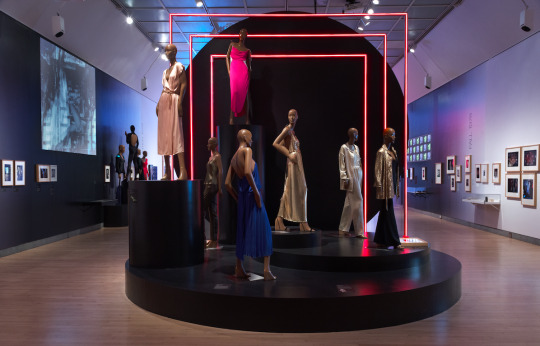
Join us for a preview of Studio 54: Night Magic—the first museum exhibition devoted to one nightclub. Enter and Sparkle! Virtual tour created by Matthew Yokobosky, Senior Curator of Fashion and Material Culture.

SETTING: NYC in the 1970s was rundown, almost bankrupt, and in need of escapism. Because rents were low though, many artists and musicians flocked to the city. It was during this time that three genres of music emerged: punk, hip-hop and especially disco.
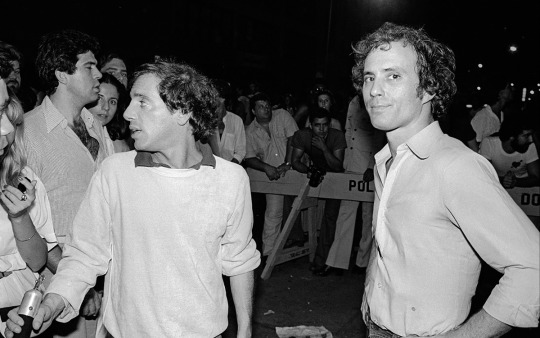
THE CREATORS: Two Brooklyn-born entrepreneurs Ian Schrager (right) and Steve Rubell (left) created Studio 54 in 1977, the same year the I Love (insert red heart) New York campaign began and Saturday Night Fever was released--together they helped to re-brand NYC.

THE PLACE: The building at 254 West 54th Street first opened in 1928 as the Fortune Gallo Opera House, became a CBS television studio for three decades (What’s My Line), and in 1966 “The Velvet Underground and Nico” album, produced by Andy Warhol, was recorded here at Scepter Studios..
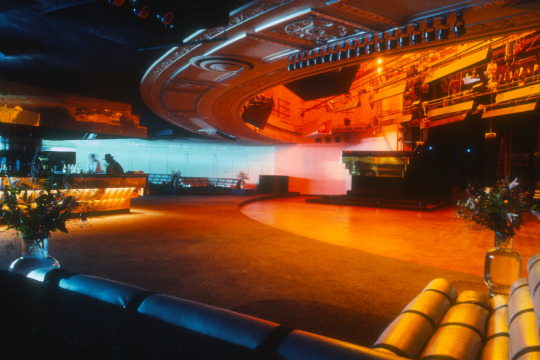
DECOR: In 1977, the designer Ron Doud and lighting wizards Jules Fisher and Paul Marantz transformed the theater/soundstage into a discotheque--replacing the stage with a dancefloor but keeping the balcony for viewing, and so that everyone could be seen and become a star for that moment. Voyeuristic architecture.

LOGO and MUSIC: LIFE magazine art director #GilbertLesser with Schrager created the iconic tilted 54 logo—one of the most widely recognized logos of the ‘70s. Later, 54 became the cover of the double-album “A Night at Studio 54”, mixed by DJ Roy Thode. Along with the album, Thode’s custom headphone, original reel-to-reel recordings, and “beats-per-minute” bible are also on display. Each gallery of the exhibition has a soundtrack based on original Studio 54 mixes.

OPENING NIGHT: On April 26, 1977, The Alvin Ailey Dance Company performed to a disco soundtrack, with choreography by Kay Thompson and costumes designed by the legendary illustrator Antonio Lopez for Fioirucci.
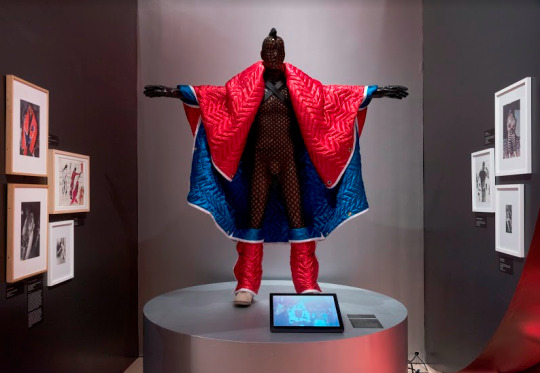
WHO GOT IN: Studio 54 soon became a must-see destination for celebrities, fashion designers, and New York’s most interesting residents--as doorman Marc Benecke described: “people who could bring energy to the room”.
One such person was performance artist Richard Gallo, who wore outrageous costumes designed by Phillip Haight and Ronald Kolodzie.
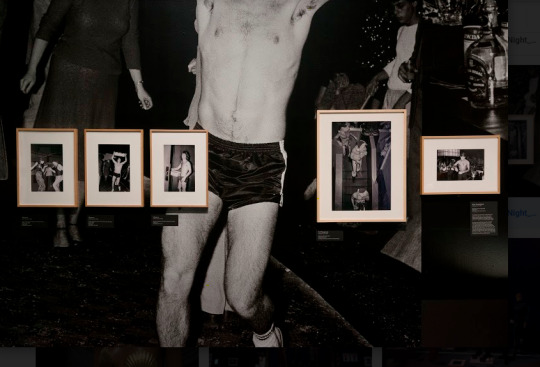
BUSBOYS: Kolodzie was also the designer of the “eye-catching” busboy uniforms composed of satin shorts one size too small, knee-high tube socks and sneakers. Many photographs in the exhibition are by @miestorm1 who himself was a busboy known as “Lenny 54”.

STARS: The exhibition features over 650 works, including twenty original paintings by Richard Bernstein of Studio 54 regulars featured on Interview magazine covers. Studio hosted the 10th Anniversary Party on June 7, 1979.
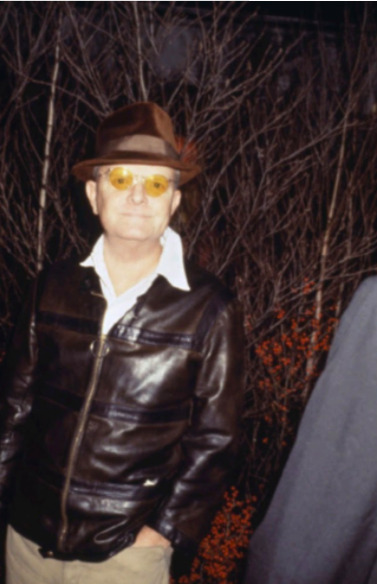
DIVERSITY: Truman Capote on The David Susskind Show, February 1979: Studio 54-- “Its everything the way it ought to be. Its very democratic. It’s all kinds of colors. All kinds of sizes. Boys and boys together. Girls and girls together. Girls and boys together. Poor people. Rich people. Taxi drivers. Anything you want. It's all mixed up together and that’s what I like about it.”
Truman Capote, 1979 by Roxanne Lowit

NEW YEARS EVE: The nightclub became known for extravagant décor by Renny Reynolds, Richie Williamson (Moon and the Spoon), and Tony-award winning designer Tony Walton (Neon Fan). Schrager’s most favorite party of all was New Year’s Eve 1978-79 which he described as “Standing on Stardust”. Reynolds brought in 4 tons of diamond dust: two for the floor, and two to sprinkle on the dancefloor throughout the night.
Background: Stroke of Midnight at Studio, 1978-79 by Dustin Pop, with dresses by Zandra Rhodes Giorgio DiSantAngelo and Kenny Bonavitacola in foreground.

DISCO FASHION: Fashion designer Halston installed disco lighting in his atelier, so that he could see how his designs would look at Studio 54 and other nightclub settings. His clients included Liza Minnelli, Elizabeth Taylor and Lauren Bacall.
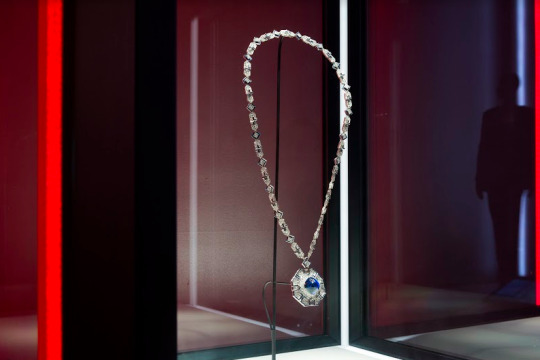
ICONS: Elizabeth Taylor famously wore her Bulgari 62-carat sapphire necklace to Studio, for Martha Graham’s 1979 benefit honoring Halston. Other attendees included past Graham students: former First Lady BettyFord, DorisDuke and LizaMInnelli.

COMING SOON: Though it only lasted for 33 months, Studio 54 – known for its legendary parties that attracted the most diverse, famous and glamorous clientele of its day – is considered to be the most important nightclub of the Twentieth Century.
See why at the Brooklyn Museum. Stay tuned for more updates about Studio 54: Night Magic.
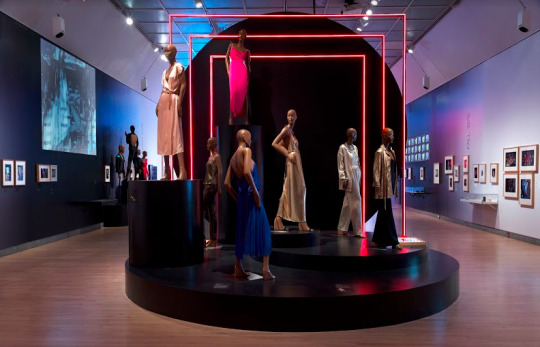
Thank you for joining us on our tour of Studio 54: Night Magic. Join us next Sunday for another virtual tour of our galleries!
Installation view of Studio 54: Night Magic. (Photo: Jonathon Dorado)
(Source: brooklynmuseum.org)
#virtual tours#virtual programming#virtual#brooklyn#Brooklyn Museum#art#art history#artmuseum#studio54bkm#studio#studio 54#night magic#Disco#dance party#virtualtour
183 notes
·
View notes
Text
The Things they Left Behind
The clothes! The Ralph Lauren polo shirts, the Halston suits, the Ultrasuede jackets, T-shirts of every hue, bleached fatigues and painter’s jeans, plaid shirts, transparent plastic belts, denim jackets and bomber jackets, combat fatigues and old corduroys, hooded sweatshirts, baseball caps, and shoes lined up under a forest of shoe trees on the floor ... There were drawers and drawers of jump suits, shirts by Ronald Kolodzie, Estee Lauder lotions and astringents, and drawers and drawers of bathing suits, of which he had twenty-eight, in racing and boxer styles. And then there were the drawers of the clothes Malone really wore: the old clothes he had kept since his days at boarding school in Vermont - old khaki pants, button-down shirts with small collars (for someone who ran around with the trendiest designers, he loathed changes in style), a pair of rotten tennis sneakers, an old tweed jacket. There was one drawer filled with nothing but thirty-seven T-shirts in different colors, colors he had bleached or dyed them, soft plum and faded shrimp and celery green and all shades of yellow, his best color. He had scoured the army-navy surplus stores in lower Manhattan looking for T-shirts, for underwear, plaid shirts, and old, faded jeans. There was a closet hung with thirty-two plaid shirts, and a bureau filled entirely with jeans faded to various shades of blue... I finally stood up, depressed at all these things - for what were they but emblems of Malone’s innocent heart, his inexhaustible desire to be liked?
Dancer from the Dance, Andrew Holleran, 1978
1 note
·
View note



